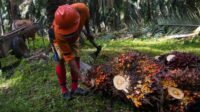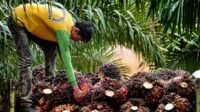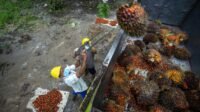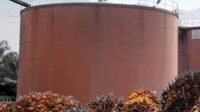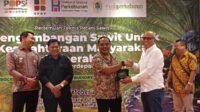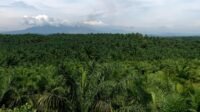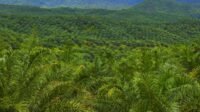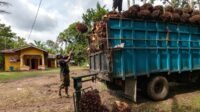PALMOILMAGAZINE, SAMARINDA — The East Kalimantan provincial government is urging palm oil companies to harness renewable energy potential from their operations, particularly from biomass and biogas generated by palm oil waste.
“Palm plantations have significant potential to turn both solid and liquid waste into clean energy sources,” said Syamsuddin, Renewable Energy Policy Analyst at the East Kalimantan Energy and Mineral Resources Agency (ESDM), as quoted by Palmoilmagazine.com from Antara, Monday (Aug 11, 2025).
He explained that solid waste, such as palm shells, can be processed into biomass fuel for power generation, reducing reliance on coal. Currently, this is mostly used to meet internal company electricity needs.
Also Read: ITB, Pertamina, Pindad, and BPDP Join Forces to Advance Biofuel Industry
Another major opportunity lies in palm oil mill effluent (POME), which produces methane gas. Capturing and converting it into biogas not only reduces greenhouse gas emissions but also creates renewable energy.
Syamsuddin highlighted the success of PT Dharma Satya Nusantara (DSN) in Muara Wahau, East Kutai, which has converted POME into biogas to fuel its operational vehicles. “When we visited in 2023, about 75% of their fleet was already running on biogas, saving the company up to Rp7 billion per year compared to diesel,” he said.
In line with provincial efforts, the East Kutai Regency Government is preparing to use palm oil waste for rural electrification. Arif Nur Wahyuni, Head of Natural Resources Division at the East Kutai administration, said they are facilitating cooperation between PLN and palm oil companies to bring electricity to 22 out of 141 villages that remain off-grid.
“The hidden energy in palm oil waste is not just about generating electricity—it is about driving Indonesia’s clean energy transition. This is the future of green energy,” Arif stressed. (P2)








